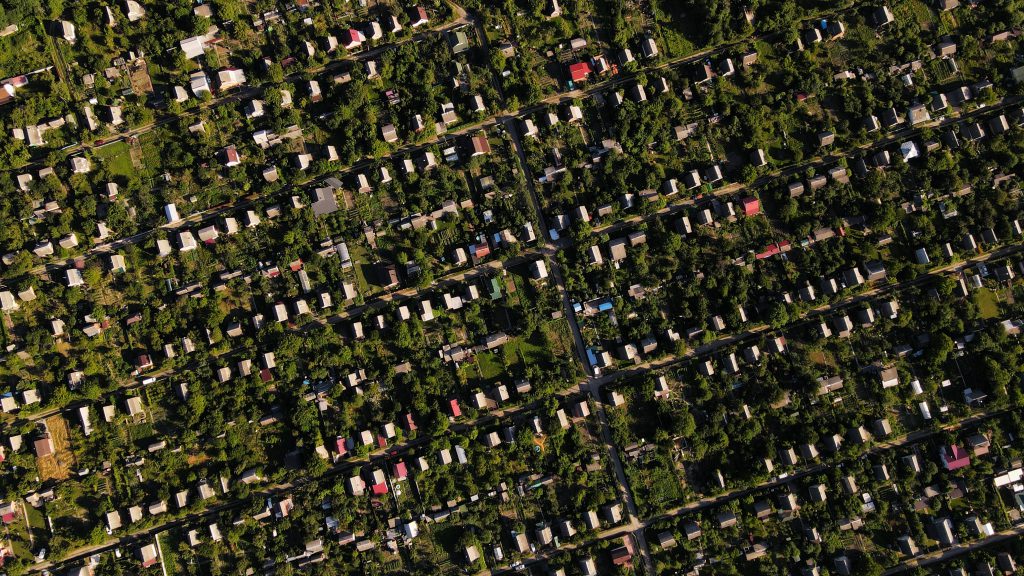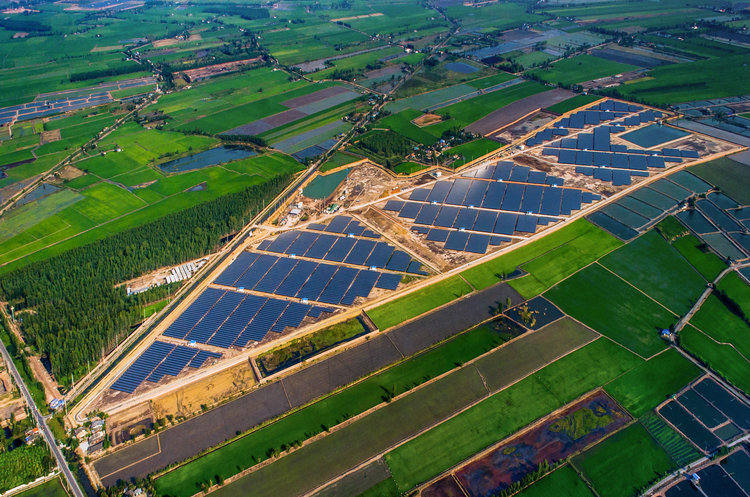Depending on where you live, you may not be able to do both–so decisions must be made. Here’s how they stack up.
If you clicked on this article, you’re probably already familiar with the many benefits of solar energy–to both our economy and environment–and the ever-growing need to switch to clean energy. I won’t preach to the choir. Now that we know we need renewable energy more than ever, it’s time to figure out how each of us can do our part.
There are plenty of ways to get involved in the clean energy revolution, and every step counts. Still, everyone’s own particular situation–location, finances, time, and the like–affects the kinds of steps they can take. One of the most common decisions people looking to join in clean energy face is between community and rooftop solar.
We’ve covered core differences between solar options in the past, but we’ve never directly compared rooftop with community solar. Well, here it is:
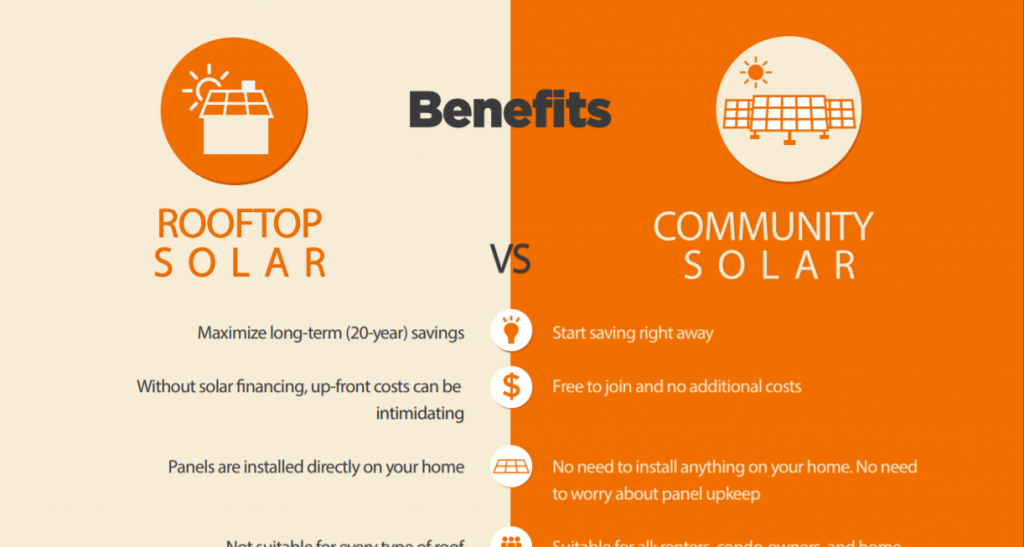
Free PDF: Rooftop vs. Community Solar
Table of Contents
Accessibility
Why start with accessibility? Because you probably don’t want to spend valuable time comparing options if it turns out you only have access to one.
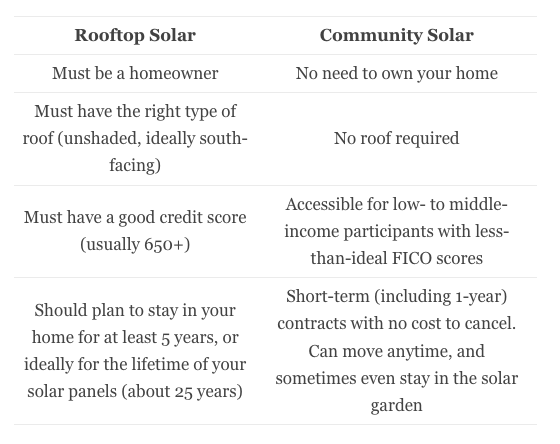
Community solar wins out here. It’s accessible for millions of Americans that can’t put panels on their roof, including renters and, thanks to the most innovative qualifying metric in solar energy, people whose credit scores fall short of rooftop solar developers’ high standards.
There’s little sense in installing a rooftop array if you’re going to move in a few years; you won’t reap any of the benefits! In the past, community solar contracts locked you in much like rooftop solar, but today that’s all changing. So for all you folks that don’t have the next decade mapped out, that’s okay. You can access community shared solar while maintaining the freedom to pursue new adventures.
Economics
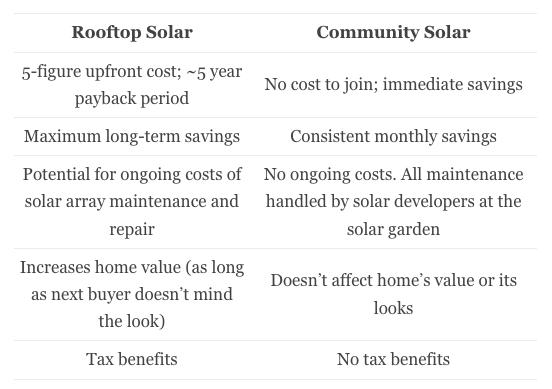
Basic summary: rooftop solar brings you more savings down the line, as long as you’re (a) willing to wait and (b) in a secure enough financial spot to pay up front. Tax benefits will help reduce the cost of your system, but in most places rooftop solar still costs over $10,000 to install. If you can pay for it, you’ll also benefit from a higher property value, while will come in handy when it comes time to sell your home.
If you aren’t ready to spend thousands of dollars on clean energy today, community solar is for you. You might actually be surprised at the way consistent monthly savings add up–enough to pay for a pretty serious coffee addiction, for instance.
Environmental Impact
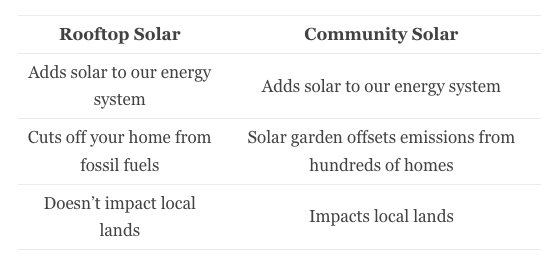
No surprise here: both bring environmental benefits. Either way, solar means less reliance on dirty polluters and a cleaner future for our planet. Rooftop solar will erase your home’s emissions impact, while a solar garden will erase the impact of many homes in your community.
In both cases, you’re adding renewables to the mix of energy your community uses. A solar garden’s energy goes to the grid, greening our power lines. In most cases, rooftop arrays can’t supply all of your power, so they also end up adding electricity to the grid when functioning at full capacity and drawing from it when production is low.
A nice perk of rooftop panels is that they use space that would otherwise go to waste. After all, what the heck are you going to do with your roof if not throw solar panels on it?
Fun fact: community solar gardens can also be built on roofs! Solstice will be taking on a rooftop community solar project soon in New York City.
Still, many solar gardens are not built on roofs. Some passionate residents interested in protecting their local environment worry that a solar garden will harm their community, either by covering up valuable farmlands or hurting local plant or wildlife. While well-intentioned, this concern shouldn’t hold anyone back from community solar. Solar gardens present extremely little risk to farmlands, and the best solar gardens get built on otherwise unusable land. Research also suggests solar gardens can actually help important wildlife thrive.
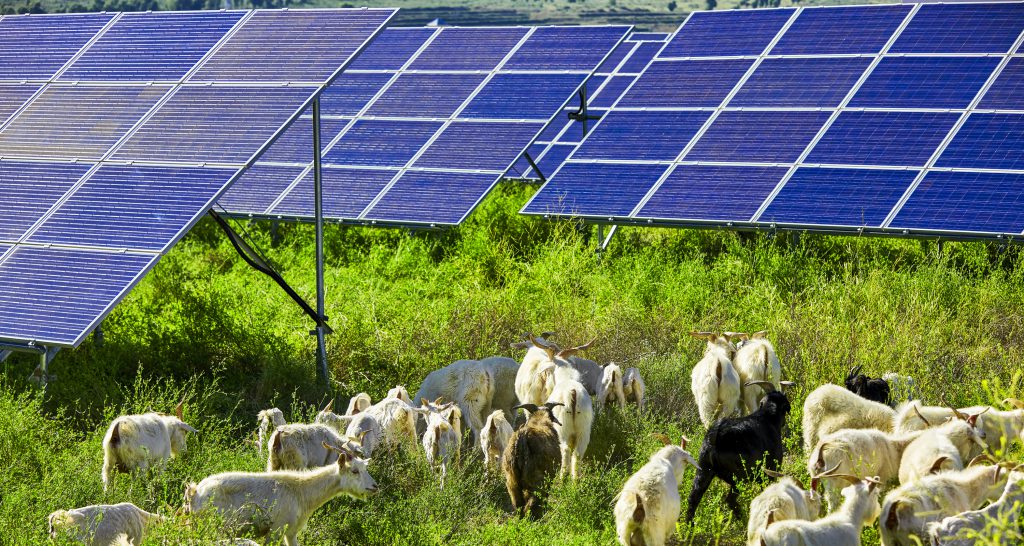
Logistics
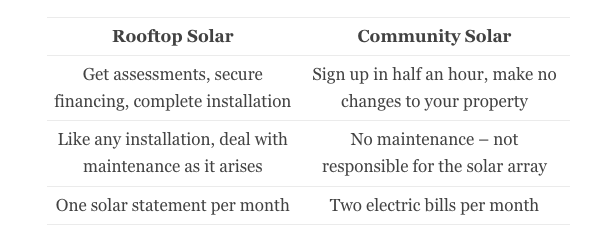
Signing up for community solar is simpler than installing a rooftop system. You don’t need to evaluate loan options, set up multiple appointments, or change anything about your home. If you’re ready to sign up, a quick phone call will do the trick.
Becoming a member of a local community garden does add one logistical wrinkle to your life: upon joining, you’ll get two bills each month–one from your utility, and one from your solar garden’s developer.
Sound a little annoying? That’s fair. Luckily, community solar developers allow for autopay, and this year, Solstice will be simplifying the payment process with one simple, discounted monthly bill.
Your Move: Community Solar Or Rooftop Solar?
As you’ve hopefully gathered, neither community solar nor rooftop solar is better than the other. But one of them is better for you. Either way, you’ll be supporting an important movement for local, renewable energy that stands to benefit your community for generations to come!


